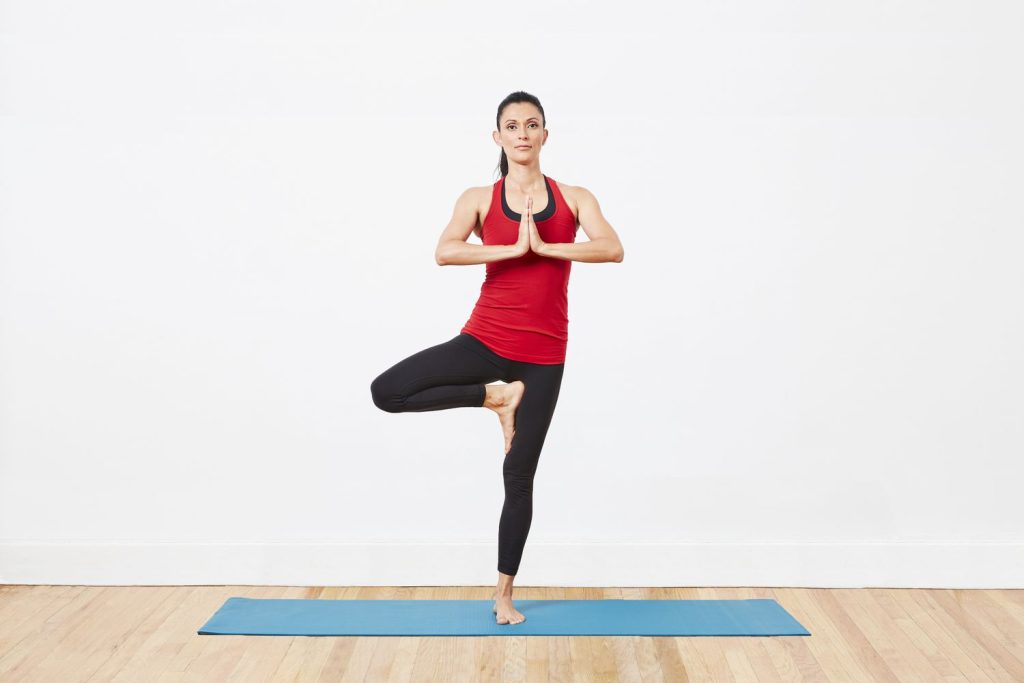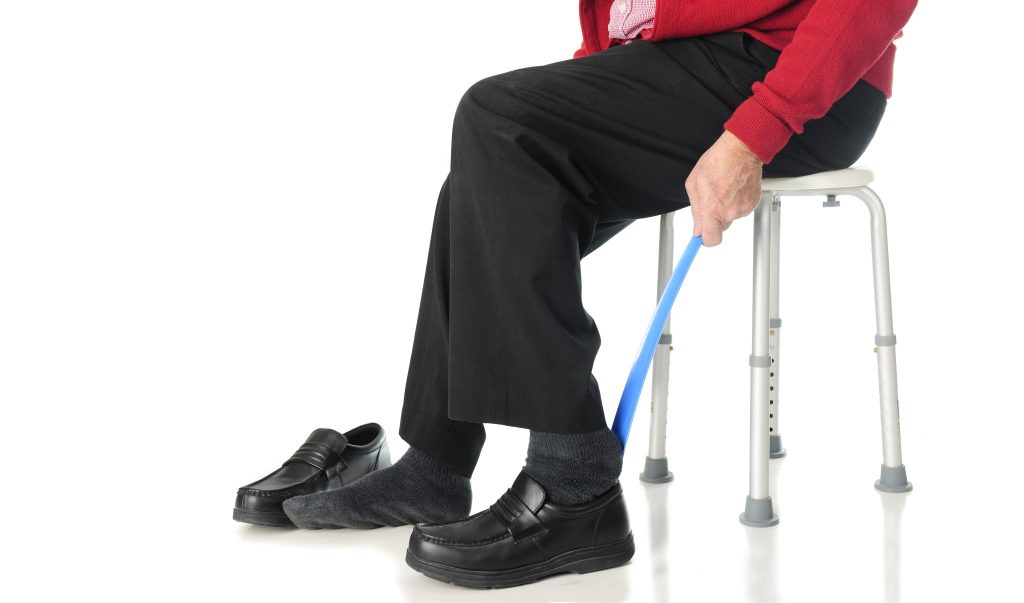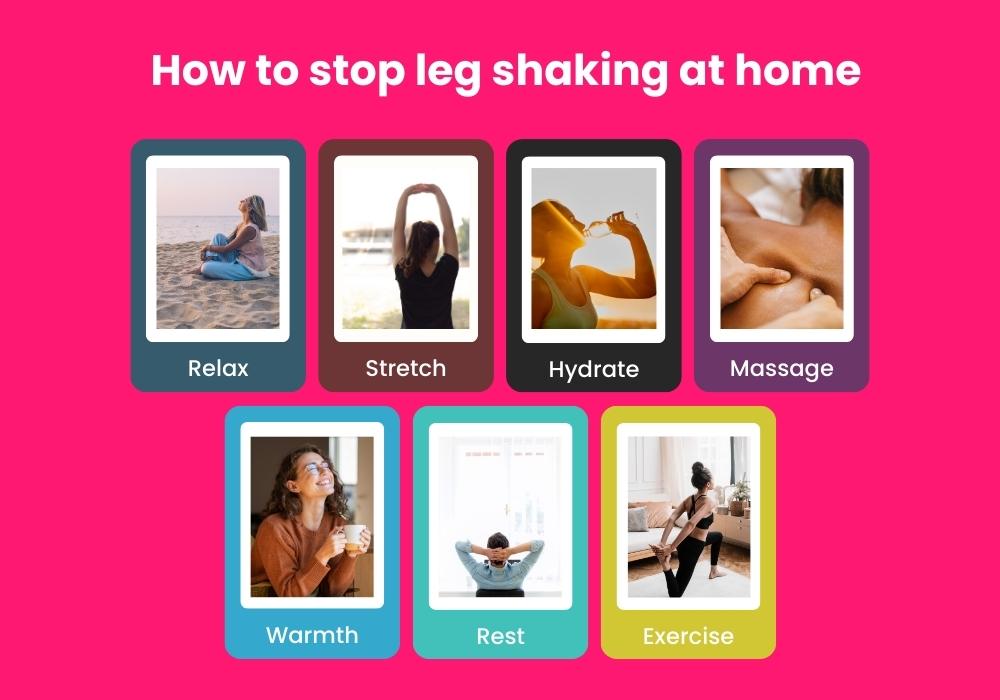There are various reasons why your legs shake when going down the stairs. From common issues like restless legs syndrome (RLS) to more serious conditions like dementia. This can range from a minor irritation to a significant challenge, causing muscle tightness and trouble with walking.
Identifying the exact cause of shaky legs solely based on symptoms is not feasible. Therefore, if you’re dealing with leg shaking, it’s important to consult a medical professional or your doctor.
What is the basic cause of legs Shake when going down the stairs?

Staircases are an integral part of our daily lives, whether at home, at work, or in public spaces. While most of us may take them for granted. Have you ever wondered why your legs shake when going down the stairs? This phenomenon can be unsettling and even dangerous in some situations. Here are some of the primary reasons behind this unsettling problem:
- Muscle Fatigue: When you go downstairs, you are essentially working against gravity to control your descent. This requires your leg muscles, particularly your quadriceps, to engage continuously to prevent you from falling. If these muscles are fatigued, they may start to tremble.
- Lack of Confidence: Anxiety and fear can also play a significant role in shaky legs. If you are nervous about falling or have had a previous stair-related accident, your body may react by tensing up, leading to trembling legs.
- Age-Related Factors: As we age, our muscle strength and balance may decline. This can make navigating stairs more challenging and increase the likelihood of leg trembling.
There are other reasons besides the basic cause of legs Shake when going down the stairs –
Some possible reasons for experiencing shaky legs while descending stairs include:
- Muscle Fatigue: One of the most common reasons for shaky legs is muscle fatigue. When you use your leg muscles extensively, such as when going down the stairs, they can become fatigued, leading to trembling or shaking.
- Dehydration: Dehydration can affect muscle function and lead to muscle weakness or tremors. Make sure you’re adequately hydrated before engaging in physical activities like climbing or descending stairs.
- Low Blood Sugar: If you haven’t eaten for a while, your blood sugar levels may drop, causing muscle weakness and trembling. This can be especially relevant if you’re going downstairs after an extended period without food.
- Anxiety or Stress: Anxiety or stress can cause muscle tension, leading to shaky legs. Some people may experience this when descending stairs in unfamiliar or anxiety-inducing situations. If you affect mental health then can you refuse this? know more about this can an adult refuse mental health treatment?
- Neurological Conditions: In some cases, neurological conditions like essential tremors or Parkinson’s disease can cause muscle tremors. If shaky legs are persistent and not related to fatigue or stress, it’s essential to consult a healthcare professional for evaluation.
- Medication Side Effects: Some medications can cause muscle tremors or weakness as a side effect. If you recently started a new medication and are experiencing shaky legs, consult your healthcare provider.
- Peripheral Neuropathy: This condition affects the peripheral nerves and can result in muscle weakness and trembling in the legs. It can be caused by various factors, including diabetes, alcohol abuse, or certain infections.
- Lack of Physical Fitness: If your leg muscles are not conditioned, they may become fatigued more quickly during physical activities like stair climbing, leading to trembling.
- Inadequate Warm-Up: Not properly warming up your leg muscles before stair climbing can make them more susceptible to fatigue and shaking.
If you’re experiencing persistent or severe shaky legs while descending stairs. Especially if it’s accompanied by other concerning symptoms, it’s advisable to consult a healthcare professional. They can conduct a thorough evaluation. Perform necessary tests, and provide guidance on managing and addressing the underlying cause of your symptoms.
How can we get released from legs shake when going down the stairs?
Here are some strategies to help you feel more stable and confident when going down the stairs:

Strengthen Leg Muscles
Regular exercise, particularly strength training for your leg muscles, can help improve stability. Focus on exercises like squats, lunges, and leg presses to build strength in your quadriceps, hamstrings, and calf muscles.

Balance Exercises
Incorporate balance exercises into your routine to improve your stability. Standing on one leg, practicing yoga, or using balance boards can help.

Stretching
Stretching exercises can improve your flexibility and reduce muscle tension. Pay special attention to your calf muscles and hip flexors, as tightness in these areas can contribute to shaky legs.

Wear shoes with good traction and support, especially when navigating stairs. Proper footwear can provide stability and reduce the risk of slipping.

Take It Slow
When going down the stairs, take your time and descend slowly. Use the handrail for support if one is available. Rushing can increase anxiety and lead to shakiness.

Breathing Techniques
Deep breathing can help reduce anxiety and calm shaky legs. Take slow, deep breaths as you descend the stairs to help relax your muscles.

Mindfulness and Relaxation
Practice mindfulness techniques or relaxation exercises to manage anxiety and stress, which can contribute to shaky legs.

Hydration and Nutrition
Ensure you are properly hydrated and have had a balanced meal before tackling stairs. Dehydration and low blood sugar levels can make you feel weak and shaky.

Rest and Sleep
Adequate rest and sleep are essential for muscle recovery and overall physical well-being. Fatigue can contribute to shaky legs, so prioritize getting enough rest.

Consult a Healthcare Professional
If shaky legs persist or are accompanied by other concerning symptoms, it’s a good idea to consult a healthcare professional. They can rule out underlying medical conditions and provide guidance on treatment or therapy if necessary.

Use Assistive Devices
In some cases, using a cane or a walking aid can provide extra support and stability when going down the stairs. Consult with a healthcare professional to determine if this is appropriate for your situation.

Physical Therapy
A physical therapist can design a tailored exercise program to improve your leg strength, balance, and coordination, specifically addressing your shaky legs.
Learn about the best martial arts for mental health to keep your mental health in check. Which can help you stay physically and mentally healthy.
Remember that it may take time to improve your stability, and consistency in practicing these strategies is key. Start with the suggestions that seem most relevant to your situation, and don’t hesitate to seek professional guidance if needed.
Physical exercise or leg exercises can prevent legs shake when going down the stairs –
Physical exercise, including leg exercises, can help improve muscle strength and stability. Which may reduce the likelihood of your legs shaking when going down the stairs. Here are some exercises that can be beneficial for strengthening the leg muscles:
- Squats: Squats target the quadriceps, hamstrings, and glutes. Which are essential for maintaining balance and stability while descending stairs.
- Lunges: Lunges work on the same muscle groups as squats and also help improve balance and coordination.
- Calf Raises: Strong calf muscles can provide better control and stability when navigating stairs. You can do calf raises by standing on your tiptoes and then lowering your heels back down.
- Step-Ups: Using a step or platform, step up and down, alternating between legs. This exercise helps improve leg strength and stability.
- Leg Press: If you have access to a leg press machine at the gym, it can be an effective way to target your leg muscles, including the quadriceps and hamstrings.
- Balance Exercises: Exercises that challenge your balance, such as standing on one leg or using a balance board, can help improve your overall stability.
- Resistance Band Work: Incorporating resistance bands into your leg exercises can add extra resistance and help strengthen the muscles.
It’s important to remember that regular, consistent exercise is key to improving leg strength and stability.
If there is a difference in eating and drinking, do the legs tremble?
No, there is typically no direct connection between the act of eating or drinking and leg tremors. Leg tremors or muscle tremors can be caused by various factors, including neurological conditions, muscle fatigue, stress, caffeine intake, medication side effects, and more. These factors are not directly related to the act of eating or drinking.
If you are experiencing leg tremors or any unusual symptoms, it is important to consult with a medical professional for a proper evaluation and diagnosis. They can help determine the underlying cause of the tremors and recommend appropriate treatment or interventions if necessary.
How to stop leg shaking at home –

- Relax: Take a deep breath and try to calm your mind.
- Stretch: Gently stretch your leg muscles to relieve tension.
- Hydrate: Drink water to prevent muscle cramps.
- Massage: Rub your legs to relax the muscles.
- Warmth: Use a warm compress or blanket to keep your legs warm.
- Rest: Get enough sleep to reduce stress and fatigue.
- Exercise: Regular physical activity can help reduce leg shaking over time.
If leg shaking persists or worsens, consult a doctor for further evaluation.
When do you think you should see a doctor for legs Shake when going down the stairs?
If you have shaky legs when walking down the stairs. You should see your doctor if:
- Frequency or intensity: Tremors become more frequent or more intense over time.
- Pain or discomfort: Pain, discomfort, or weakness in your legs with tremors.
- Balance problems: If you have trouble maintaining balance while going down stairs due to leg tremors.
- Recent onset: If tremors start suddenly without apparent reason.
- Other symptoms: You notice other unusual symptoms, such as numbness, tingling, or coordination changes.
- Underlying medical conditions: If you have an underlying medical condition such as Parkinson’s disease, multiple sclerosis, or peripheral neuropathy. Then consult your doctor immediately.
- Persistent anxiety: If you’re worried about leg tremors and it doesn’t improve with rest or lifestyle changes.
Remember, it is always best to consult a healthcare professional for a proper evaluation if you have any doubts or concerns about your health.
Disadvantages of Legs Shake When Going Down The Stairs
Moving your legs, also known as leg bouncing or fidgeting. This is a common behavior that many people exhibit in various situations. There may be some disadvantages associated with this practice. For both the person doing it and those around them. Here are some potential pitfalls:
Distraction
Moving your feet can be distracting to others. Especially in quiet or formal settings like meetings, classrooms, or theaters. It can disrupt the concentration of those around you.
Disturbance
The constant leg-shaking movement can be disturbing to the people around. Which leads to resentment and potentially affects interpersonal relationships.
Impression
Moving your feet excessively can give the impression of nervousness or impatience. Even if it doesn’t. This may not be desirable in professional or social situations where you want to be composed.
Physical discomfort
Frequent leg movements can lead to physical discomfort such as muscle fatigue or pain over time. It can also contribute to poor circulation in the legs.
Negative perception
Some people may shake their legs as a sign of anxiety, restlessness, or insecurity. which can lead to negative perceptions of the person engaging in the behavior.
Lack of concentration
If you move your legs while trying to concentrate on a task, it can affect your own focus and productivity. The energy expended on leg shaking could be better used elsewhere.
Social Consequences
In social situations, excessive leg shaking may be seen as rude or disrespectful. Potentially makes others uncomfortable or leads to social awkwardness.
Noise
Depends on the surface and the strength of the foot shaking. It can create noise, which can disturb a quiet environment.
Potential health problems
Although occasional leg tremors are not likely to cause health problems. Excessive or continuous leg bouncing can strain joints or aggravate conditions such as restless leg syndrome.
Lack of mindfulness
Some people move their legs as a subconscious habit without realizing it. This lack of mindfulness can prevent you from being fully present in the moment.
It is important to remember that occasional leg shaking is a normal behavior and may not be a significant problem. However, if you or someone you know experiences excessive leg tremors that interfere with daily life or cause discomfort. Then it may be worth considering ways to manage or reduce this behavior. Techniques such as relaxation exercises, stress management, and mindfulness practices can be helpful in resolving leg shaking when it becomes problematic.
In conclusion
Experiencing leg shaking while going down the stairs is a normal physiological response to the complex coordination of muscles and nerves involved in this activity. It’s usually nothing to be overly concerned about, but if you find that your legs shake excessively or if it becomes a persistent issue, it may be worth consulting a medical professional or a physical therapist to assess your muscle strength and coordination.
Remember that staying active and regularly exercising your leg muscles can help reduce the chance of leg shaking on stairs.






